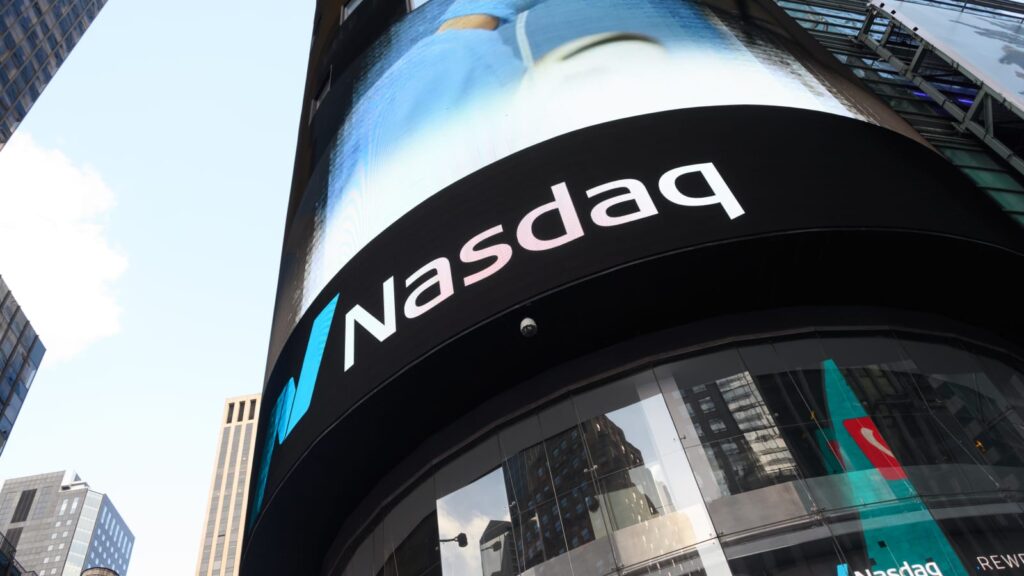
There’s a reason corrections are called corrections.
When market prices accelerate and overshoot, a sharp reversal acts as a course correction to bring them more in line with a longer-term trend.
A picture of the market pullback in recent weeks could sit beside the definition of a correction in the dictionary. (Never mind the mock-precise definition of a correction as a 10% decline; that’s strictly an oversimplified rule of thumb).
Not only has the S&P 500 cut back to its months-long uptrend after getting stretched against it in August, but the most over-extended parts of the market – the Nasdaq-dominated tech giants – have corrected the most. And it’s all happened without clear indications of rising economic stress, a hint that the setback is mostly a positioning and sentiment adjustment, disgorging some quick and easy summertime gains.
The fevered melt-up through August got Apple above $2.3 trillion, took Tesla to $500 a share, lifted the S&P 500 to a 10% year-to-date gain, pulled the Dow Industrials positive for 2020, carried the Nasdaq 100 forward price/earnings multiple above 30 and drove the Nasdaq Composite to a monstrous and historic 29% premium to its 200-day moving average. All emblems of excess, set against a massive surge in small-investor bidding for call options, the favored quick-buck gambit of a new trading cohort.
In September, all of this has unspooled roughly in proportion to how strong parts of the market were on the way up.
The Nasdaq 100 is off nearly 11% from its high, compared to less than a 7% drop for the S&P 500 and, crucially, the average stock in the S&P is off just over 2% this month.
The four biggest drags on the Nasdaq 100 this month — Apple, Microsoft, Amazon and Tesla — account for more than half that index’s nearly 9% drop in September. The same four are still responsible for most of the Nasdaq 100′s current 27% year-to-date gain.
Tesla stock split
Apple is both down a bunch and still sitting on gaudy gains. The stock at Friday’s intraday low was almost precisely 20% off its Sept. 2 record high – yet it was still higher than its close a month earlier on Aug. 11.
This date, Aug. 11, is significant. It’s when Tesla announced its 5-for-1 stock split, helping to spark the steep, high-velocity ramp and stoked the wild one-way options blitz. The S&P 500 finished that day at 3330, a level touched or crossed several times last week.
The fact that even an 11% drop in the Nasdaq 100 has taken it back a mere 22 trading sessions in time is remarkable, and perhaps argues against the idea that a full flush and reversion to the mean has yet taken place. In fact, once a market has overshot in one direction, it can sometimes, though hardly always, lead to reversion beyond the mean.
Friday the Nasdaq 100 closed under its 50-day moving average for the first time in 105 days. According to Bespoke Investment Group, this was only the tenth time since 1985 the index stayed above its 50-day average for at least 100 days. The returns thereafter were weak on average over the next month or so.
Deutsche Bank strategists note that the past ten days’ underperformance of mega-cap growth simply places it at the lower end of its range relative to the S&P 500, near where it stood in early June when real-economy “reopening” stocks shot higher before the Sunbelt Covid surge cut them back.
The correction so far has moderated investor sentiment somewhat. Yet the massive stampede in small call-option orders by retail speculators has slowed only a bit, going from extreme speculative bullishness to a neutral mix.
And do professional investors who’ve been complaining for months about the narrowness of the market and the need for a pullback seem a bit too satisfied and comfortable with the way this market break has played out? Do folks need to be more scared before a reliable low takes hold? Unclear but worth asking.
What’s it mean?
The silver lining in all this is, very little of the recent weakness has the look of the markets sniffing out imminent economic problems or financial stress, at least so far.
As Jeff deGraaf of Renaissance Macro Research, puts it, “High yield and most other credit measures have remained firm, while 10-year [Treasury] yields have been stable. There’s nothing suggesting equity weakness is being triggered by credit. Similarly, copper remains firm, and more importantly cyclicals have stayed strong versus defensives. Do equity events turn into credit events and economic events? Rarely, but they can, however they’re usually preceded by an outside influence like Fed or unforeseen changes in regulations.”
Erratic action in the market’s biggest, most widely owned stocks, after having grown to unwieldy proportions, is not exactly a positive. But relative strength in the equal-weighted S&P 500, transportation shares, heavy industrials, housing-related names, consumer cyclicals and basic materials stocks argue against index weakness being taken as an economic warning.
The current backdrop remains an odd combination of early-cycle recovery dynamics (earnings set to rise from depressed levels, snapback in manufacturing activity), super-easy monetary conditions and late-cycle risk appetites and valuations.
Nothing has changed about the reliable accommodation of the Fed, bond yields below the inflation rate, the scarcity value of long-term corporate cash flow growth and the relative caution of Wall Street strategists – all supportive factors for the market.
But support doesn’t equal an upside catalyst. Next week we have a Fed meeting, something that has led to short-term equity weakness lately, along with crucial industrial and housing data from August and perhaps a dozen IPOs slated to price.
More tests for a market that is trying to sort out how much payback is needed to correct for a whopper of an August overshoot rally.